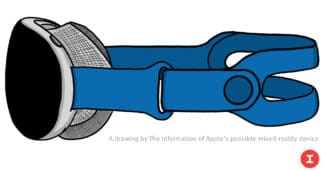App Store logs and GitHub code from Apple confirm the existence of realityOS, expected to be used in Apple’s upcoming headset.
The existence of realityOS was first reported by Bloomberg all the way back in 2017. In 2021 Bloomberg, The Information, and supply chain analyst Ming-Chi Kuo released reports claiming Apple is preparing to release a premium headset for VR and AR with high resolution color passthrough. Recent notes from Kuo claim this headset will weigh significantly less than Meta’s Quest 2, feature dual 4K OLED microdisplays, and use a new chip with “similar computing power as the M1 for Mac”.

Three weeks ago, iOS Developer Rens Verhoeven spotted a new platform “com.apple.platform.realityos” in the App Store app upload logs. Apple’s existing operating systems include iOS (com.apple.platform.iphoneos), iPadOS, watchOS (com.apple.platform.watchos), macOS, and tvOS.
This week, “award-winning git repository surgeon” Nicolás Álvarez spotted Apple committing code to its open source GitHub repository referencing ‘TARGET_FEATURE_REALITYOS’ and ‘realityOS_simulator’ – the latter likely a feature to allow developers without the headset to test building AR or VR applications. Álvarez says Apple quickly force-pushed the repo to try & hide the change, suggesting making this public was a mistake.
This isn’t the first public confirmation of Apple working on AR & VR software. In December a job listing was posted for ‘AR/VR Frameworks Engineer’, with the role described as “developing an entirely new application paradigm” for “software that is deeply integrated into our operating systems”.
If Apple can pull off putting an M1-tier chip in a slim headset, it could deliver a significantly higher fidelity experience than Quest 2, and even Meta’s own upcoming take on a premium headset, Project Cambria. Last month Bloomberg reported the product release may have slipped to next year, and claimed Apple has “weighed prices north of $2000”.






